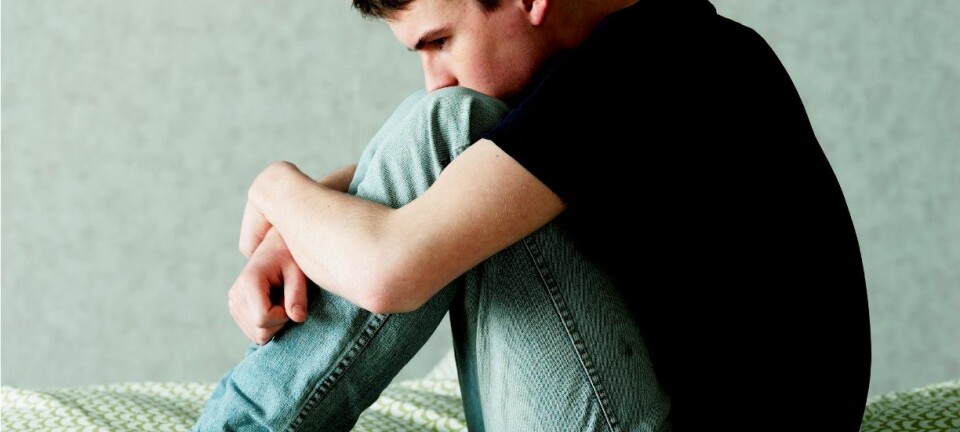An article from NOVA - Norwegian Social Research

It is not the ambitious girls who struggle most
Ambitious young people are not the ones who struggle most with mental health problems. On the contrary, it is those who are least integrated in school, family life and leisure activities who have the most problems.
Denne artikkelen er over ti år gammel og kan inneholde utdatert informasjon.
The Norwegian Ungdata report for 2015 collates responses from 110,000 lower secondary school pupils in the period 2012–2014. It shows the same main trend as for previous years: that the situation for young people in Norway is mostly very good, but that too many worry a lot and experience stress and problems in their everyday lives.
The report focuses in particular on what is characteristic of the young people who struggle more with mental health issues than their peers, and the figures speak for themselves.
‒ The young people who struggle most with mental health problems are less happy at school, do less homework, skip school more and plan to take higher education to a lesser extent than others, says Anders Bakken, project manager for Ungdata.
‒ There are also well-integrated and ambitious young people who struggle, but this group has perhaps received a little too much media attention in recent years, says Bakken, who would like to paint a more nuanced picture of the situation.

The group with the highest prevalence of mental health problems have poorer relationships with their parents, fewer friends, are more often bullied, and are less happy in their local community than young people with good mental health. They also have more experience of criminal activity and use alcohol and drugs more.
‒ All in all, this shows how important it is to strengthen local preventive efforts and that prevention must take place across the arenas that young people frequent, Bakken emphasises.
More girls than boys struggle
The prevalence of mental health problems increases during adolescence, particularly during the lower secondary school years. Nearly one out of four girls in year 10 and upper secondary school state that they struggle so much that it can be regarded as a sign of depressive symptoms.
Depression is less frequent among boys than girls. In each cohort, between two and three times as many girls as boys experience such problems.
Negative self-image
Many young people who suffer from mental health problems have a negative self-image. Among the group of girls who struggle the most, only one in three are happy with themselves. Young people who have few friends and are dissatisfied with their own appearance are also the ones who are least happy with themselves.
Among girls in particular, it is clear that being happy with oneself is strongly linked to being satisfied with one's appearance.
‒ This indicates that we should take a closer look at the prevailing body ideal to understand why so many young girls struggle with mental health problems, Bakken emphasises.
Big gender differences in physical health problems
Although the majority of young people are happy with their own health, the report shows that too many are troubled by different types of health problems in their everyday lives. Many suffer from headaches, stomach pain and pain in the neck, shoulders, joints and muscles.
Most of them experience such problems a few times a month, while 13 per cent of lower secondary pupils suffer from physical problems on a daily basis. There are large gender differences in this area, as much as for mental health problems, according to Bakken.
Among girls, the prevalence of physical health problems increases from 8 to 20 per cent during their lower secondary school years. The curve levels out in year 10. From then until the final year of upper secondary school, about 20 per cent of girls struggle with physical health problems every day.
For boys, there is little variation with age, with about eight per cent struggling with physical health problems on a daily basis in all years.
Those who struggle mentally also struggle physically
‒ We see that many struggle with both physical and mental problems, says Bakken. Nearly four out of ten of those who struggle most with their mental health also experience physical problems on a daily basis.
Researchers have also found that 22 per cent of girls and 12 per cent of boys use over-the-counter medication such as paracetamol every week or every day.
About the Ungdata report
The 2015 report is an update of the national Ungdata reports published in 2013 and 2014. The report gives a broad presentation of the situation for Norwegian lower secondary school pupils in various areas and of how many of them engage in different activities. Unless otherwise specified, the report presents responses from about 110,000 pupils who took part in the Ungdata survey in the years 2012–2014.
A new feature of this year's report is that some figures also show how young people in each of the three years of upper secondary school have responded. This brings the total number of respondents up to 156,000. The response rates are 82 per cent in lower secondary school and 66 per cent in upper secondary school.
-------------------------------------
Read the Norwegian version of this article at forskning.no


































